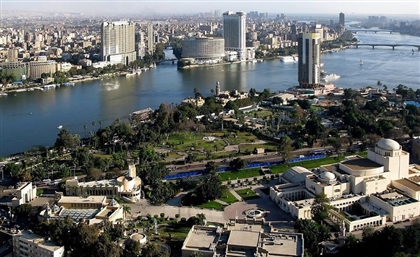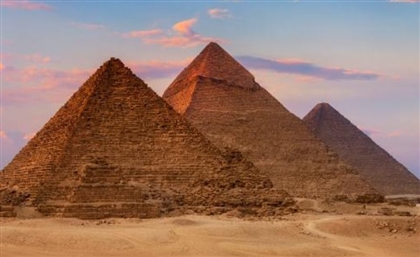13 Endangered Animals Native to Egypt
What's next? Camels and Baladi dogs?

Egypt is definitely a land of opportunity if you know where (and how) to look for it, and it seems over the years that many have found that opportunity at the cost of Egypt's naturals beauty. Egypt used to be covered with lush forests and teeming with hundreds of different wild species, from elephants and giraffes to lions; and many types of gazelle; and even gerbils.
As humans evolved and the geography of Egypt changed to the mostly desert landscape we see today, many of these animals have disappeared. We humans have exterminated many of Earth's inhabitants, and Egypt is no different. The herds of gazelle that used to proliferate the eastern desert and Sinai fell victim to the quad bikes and machine guns of the past generation, while construction on the coastal regions has eliminated the food sources of many more animals that might soon join the ranks of animals extinct due to humans. Here are a few that are almost at that point.
Barbary sheep - Ammotragus Iervia ornate

These Egyptian Sheep were thought to have gone extinct in 1997, after being very common throughout the Eastern and Western deserts of Egypt. A few of these Horned sheep were actually chilling in the Elba National Park reservation the whole time, and they have since been introduced to Mexico and the United States for some reason. So even if Egypt loses another endangered species, they will still live on as expats.
Egyptian Mau - Felis catus

One of the two smaller cats that have naturally occuring spots, these exotic felines are perhaps the rarest domesticated cats and the fastest, with recorded speeds of 48 KM/H (30 MPH). Currently, they come in at around 6,000-7,000 kitters, and usually have an M or scarab marking on their forehead. Known for their charming personality, these cats are actually endangered due to cross-breeding
Egyptian Jungle Cat/Swamp Cat - Felis Rüppelii

Prone to living in wetlands and forests, which are pretty rare in Egypt, these cats are mostly found in the Nile Delta region north of Cairo. These cats are slightly bigger than domestic cats, but do sometimes attack livestock, which of course attracts the ire of the local farmers, who set traps to kill what they see as pests. The main threat to these felines is destruction of their natural habitat, poisoning as well as hunting and the illegal trade of smuggling these cats as exotic animals.
Egyptian Tortoise- Testudo Kleinmanni:

One of the smallest Tortoises in its family, the Egyptian tortoise is a neck-hiding fellow that is on the brink of extinction. Almost completely extinct in Egypt's wildlands due to their habitat being completely destroyed, thanks to human activity and hunting for traditional medicine. These Tortoises live long lives and do not have many offspring, which is why the species will be hard-pressed to recover, particularly as they are very popular in the pet trade. There are approximately 7,500 (or less) Egyptian Tortoises remaining world-wide, in the wild and in captivity.
Nubian Ibex - Capra nubiana

Listed as Vulnerable, these guys are found in the Eastern desert, Red Sea Mountains and Sinai regions of Egypt, but are also found in small areas of Israel, Saudi Arabia and Sudan. However, the population is listed as less than 2500 individuals. The Nubian Ibex has had their number depleted due to increasing scarcity of water sources or contamination of the water, habitat degradation, tourists visiting their birthing sites, as well as some good old-fashioned poachers on ATVs (All-Terrain Vehicles or quadbikes) with machine guns.
Nubian Wild Ass - Equus africanus africanus

Only a few hundred of the Egyptian donkey's ancestors remain. The Nubian wild ass is listed as critically endangered, only surviving in zoos or in Elba National Park in Egypt. This species was driven to the brink of extinction due to hunting, crossbreeding with domesticated donkeys as well as competing with livestock for limited resources.
Dorcas Gazelle/Slender-Horned Gazelle - Gazella dorcas

The Slender horned gazelle wander the Eastern and western deserts of Egypt as well as the Sinai Peninsula. The population is believed to be around 1,000 currently, however, its population is shrinking due to unregulated hunting,habitat destruction as well as competition with cattle over food. Wild Dogs also play a part, harassing the gazelles as well as killing their young. These animals are an important part of Egypt's ecosystem, not just because they play a role in spreading some seeds through their digestive tract but also because they feed vultures and other scavengers when they expire.
Four-Toed Gerboa - Scarturus tetradactyla

Native to Egypt and Libya, these adorable little hopping rodents live in coastal marshes and dry deserts, eating grass, leaves and seeds. Due to the rapid pace of human construction and habitat encroachment, these furry little friends are listed as endangered and facing a very, very, high risk of extinction.
Flower's Shrew - Crocidura floweri

There are way more cute animals in Egypt than you thought possible, and these small, fluffyy mammals live in arable farm land, mostly in the Nile Delta. However, they are threatened by habitat loss due to farming as well as urbanization, and are only found in Egypt.
Flower's Gerbil- Gerbillus floweri

Who knew that Egypt had its own chill gerbils, living on the North coast from the Nile Delta towards El-Arish? Since you may not have even heard of Egyptian gerbils, you should probably guess that they are endangered. Only about 250 of these cuties are currently living in the wild.
Egyptian Leopard - Panthera pardus

The last confirmed sighting of this fierce cat was in 2016 in Elba National Park. The Leopard attacked a camel, and this rare feline was killed in retaliation by the shepherds. This may have been the last confirmed sighting, yet Bedouins have claimed to have spotted one since then in Sinai.
Egyptian Vulture- Neophron percnopterus

Sometimes known as the Pharaoh's chicken, these vultures are known for being one of the only birds known to use tools such as pebbles to break eggs to eat, as well as using twigs to roll up wool for use in their nests. These intelligent birds feed on carrion, small animals, and have had their numbers reduced due to flying into power lines, hunting, as well as consuming contaminated meat from poisoned animals. They are migratory birds, and are found outside of Egypt, however, within Egypt, they have become scarce and a rare sight within the past few years.
Those are just some of the animals that are closest to the point of no return, but it's not too late for Egyptians (and the world as a whole) to take a stand and protect these adorable animals. They don't stand a chance in the face of Humanity's (and Egypt's) hostile take-over of the planet and its resources. Also, did most of you know that there were wild gerbils living in Sinai and Zagazig? I, for one, did not.























